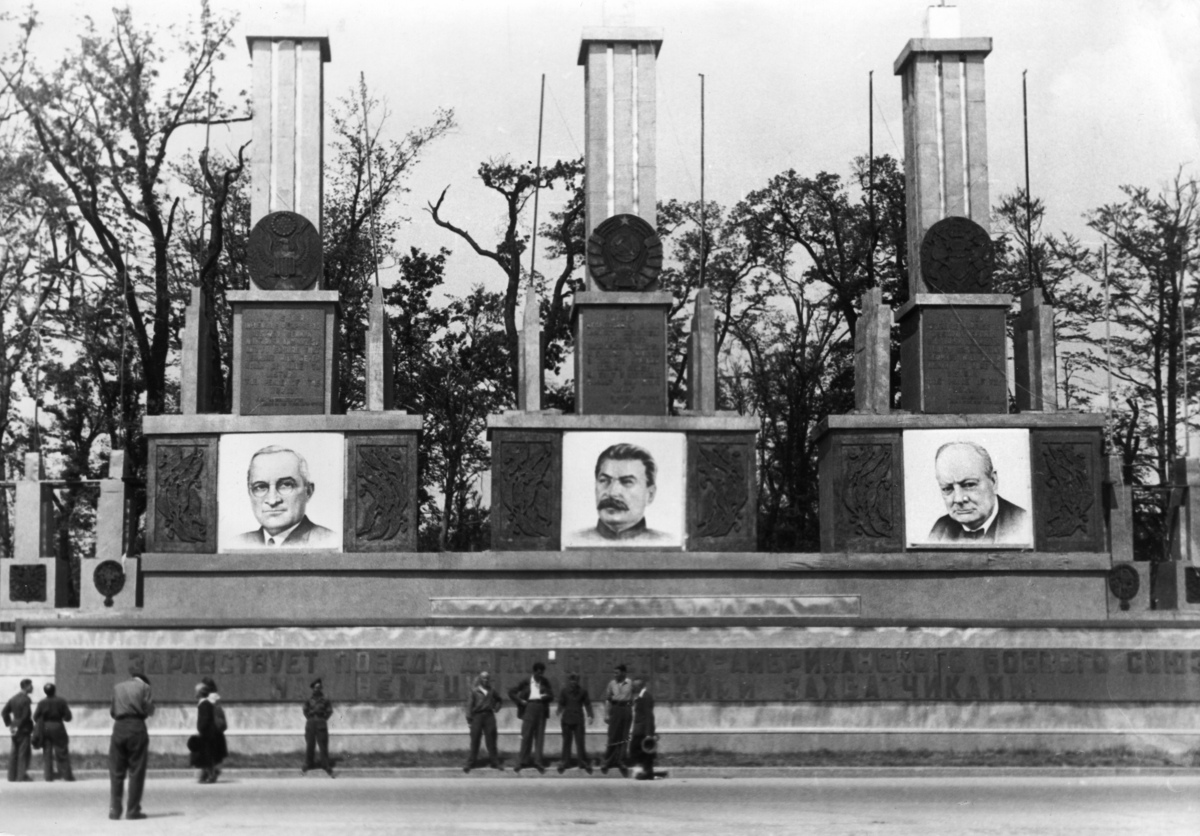Abstract
In the middle of April 1945, the Red Army launched a massive
offensive against the German capital of Berlin. Starting on April 25,
the city was sealed off. On May 2, 1945, after the suicide of Adolf
Hitler, the city surrendered unconditionally. The Germans sought to sign
a separate peace with the Americans and the British but to continue
fighting the Soviets. The Allies did not agree to this, however; they
continued to insist on the unconditional surrender of the entire German
Reich. This followed May 7-8, 1945.
The portraits of American President Harry S. Truman, Soviet leader
Joseph Stalin, and British Prime Minister Winston Churchill on display
on Berlin’s famous east-west axis symbolized Allied unity, which held
until the end of the war. Starting on July 17, 1945, the Big Three met
for negotiations at Potsdam, where they sought to devise an approach to
dealing with the defeated German Reich and establishing a new European
postwar order. These negotiations, however, were overshadowed by massive
political differences between, on the one hand, the Americans and the
British (with the Labour Party’s Clement Attlee replacing the
Conservative Party’s Winston Churchill in the midst of the conference)
and the Soviets on the other. In subsequent months, these differences
would only intensify.
